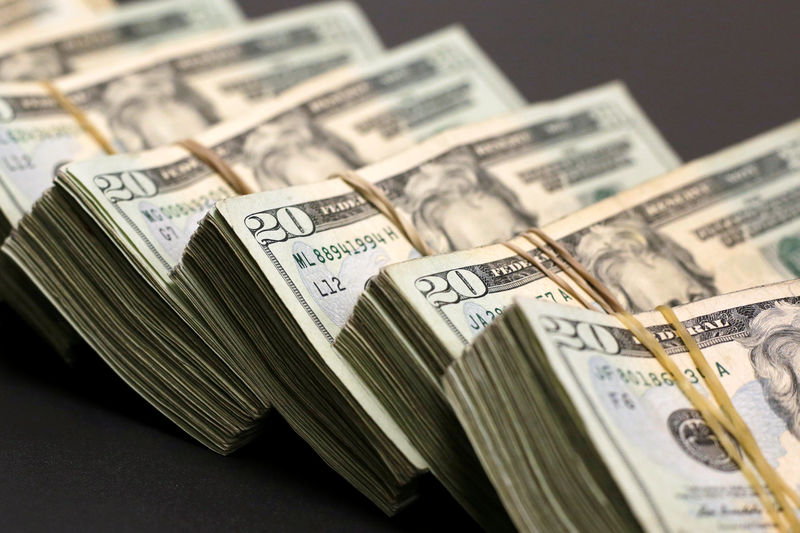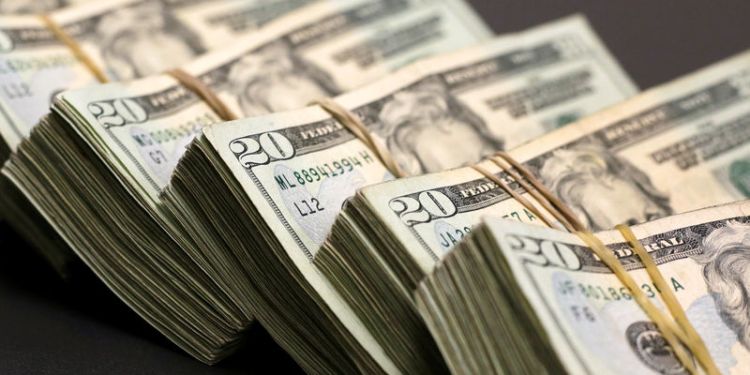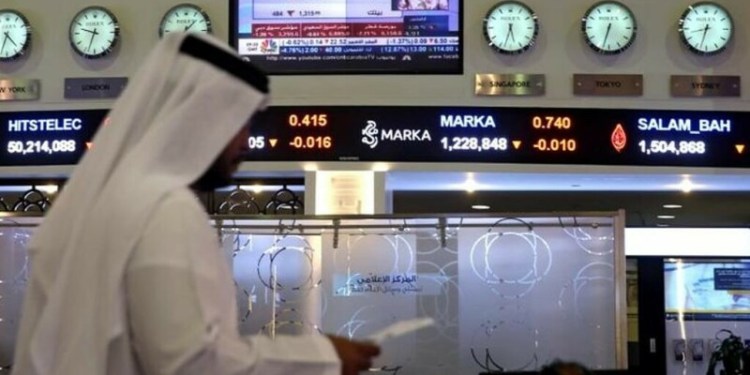 © Reuters. Bundles of banknotes of U.S. Dollar are pictured at a currency exchange shop in Ciudad Juarez
© Reuters. Bundles of banknotes of U.S. Dollar are pictured at a currency exchange shop in Ciudad JuarezBy Hideyuki Sano
TOKYO (Reuters) – The U.S. dollar was lodged near a three-year low against a basket of currencies on Friday with fears over a possible U.S. government shutdown adding to its underlying woes stemming from its eroding yield advantage.
The () stood at 90.518, having fallen to as low as 90.104 on Thursday, a level last seen in December 2014. It has lost 1.8 percent so far in 2018.
The U.S. House of Representatives on Thursday passed a bill to fund government operations through Feb. 16 and avoid agency shutdowns this weekend when existing money expires. The bill still must be approved by the Senate, where it faces an uncertain future.
“In December, lawmakers had to pass tax cuts so the process seemed smooth. But this time the risk of a government shutdown seems higher, even though it is not our main scenario,” said Shinichiro Kadota, senior FX strategist at Barclays (LON:).
The prospects of the Senates approval has been complicated by President Donald Trump saying an extension of funding for the Children’s Health Insurance Program (CHIP), a Democratic priority, should not be included.
The euro
The dollar traded at 111.02 yen
The 10-year U.S. Treasuries yield () rose to 2.627 percent, near its December 2016 peak of 2.641 percent hit on hit on expectations on Trump’s economic plans including tax cuts and infrastructure spending.
The dollar has fallen since 2017 largely on expectations central banks besides the Federal Reserve are seeking to end their policy of ultra low, even negative, interest rates that they adopted to combat the 2008 global financial crisis and the recession that followed.
“The U.S. is no longer the only country raising rates. The market’s focus is on how other countries are catching up with normalization in monetary policy,” said Barclays’ Kadota.
Many investors think the European Central Bank will edge toward ending its bond purchase program later this year.
A tiny reduction in the Bank of Japan’s bond buying earlier this month was enough to spark speculation about possible modification in its policy even though many market players think any move will be many months away.
Another underlying factor behind the dollar’s weakness was global investors, including sovereign wealth funds and central banks, diversifying their holdings by switching more funds into other currencies.
China and Japan, the top two foreign U.S. creditors, cut their holdings of Treasuries during November, according to Treasury Department data.
According to a report from the International Monetary Fund released in December, central banks increasingly added more non-dollar based currencies to their foreign exchange reserves in the third quarter.
The Bank of France also said on Monday it already held some currency reserves in yuan, hours after the German central bank said it was looking to move some of its reserves into the Chinese currency.
“European central banks are adding the yuan to their reserves. And if Chinese are diversifying, shifting to European bonds from U.S. bonds, that would suggest a shift from a regime where the dollar is overwhelmingly strong,” Ayako Sera, market economist at Sumitomo Mitsui Trust Bank.
Source: Investing.com




























